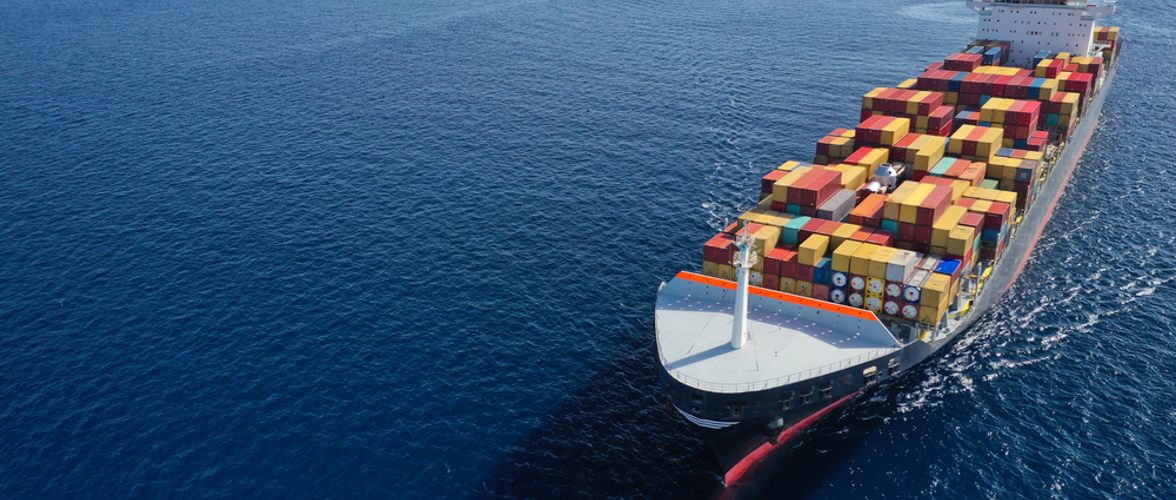Key Takeaways
- Natural disasters are escalating in frequency and severity across the globe. Environmental changes are having a notable impact, causing widespread disruption and economic damage.
- Industries like insurance and manufacturing, right through to agriculture, are experiencing the impact of increasing natural disasters.
- Businesses globally must adapt to the ongoing threat of natural disasters, creating robust strategies to prepare for and manage these growing challenges.
When nature strikes: The rising threat of natural disasters on global economies
From devastating hurricanes and floods to catastrophic wildfires and earthquakes, increasingly devastating natural disasters present significant challenges and risks for firms operating across all sectors. Natural disasters disrupt operations and impose substantial economic and human costs.
Losses caused by natural disasters exhibit a very high degree of volatility, with the degree of damage caused by each isolated event varying. However, the total economic cost of damages due to global natural disasters has overall trended upward, at an estimated compound annual growth rate (CAGR) of 4.7% between 1980 and 2022.
Although economic costs have escalated, the death toll from these disasters has notably declined over the past decade. This reduction is largely attributed to the increasing resilience of global economies and improvements in infrastructure, providing better protection against the impacts of these events.

The impact of natural disasters is felt worldwide and the frequency shows no signs of slowing. In 2023 alone, 66 natural disasters inflicted upwards of an estimated USD $1 billion each in economic damage. These events include the destructive earthquakes in Turkey and Syria, China’s heavy rainfall and devastating floods and the significant damage Mexico experienced when Hurricane Otis made landfall.
The rise in natural disasters highlights the deadly effects of climate change. Managing and preparing for these challenges is more critical than ever. But which industries are most threatened by natural disasters? And what can they do to try to mitigate the risks?
Which industries are most impacted by natural disasters?
Insurance firms
Current impact
The growing uncertainty for insurance firms, brought on by the rising prevalence and intensity of natural disasters, is altering the landscape of risk evaluation, premium pricing and policy coverage. Natural disasters such as severe floods and bushfires are triggering a surge in claims for property-related damages and loss, leading to noticeable financial impacts for insurance firms.
For example, Hurricane Ian in the United States caused significant damage resulting in insured losses estimated between $50 and $55 billion out of total economic losses of $95 billion. Similarly, Australia experienced an extended La Niña weather event in 2022, which led to severe flooding and generated insured losses of $4 billion.

In an attempt to counterbalance the heightened risk, insurance firms are being forced to raise policy premiums, particularly in areas with heightened susceptibility to natural disasters. This approach, however, is pushing some businesses and individuals out of the insurance market due to inflated costs leading to affordability issues.
Insurance firms are also grappling with the increasing expense of reinsuring themselves, a safeguard to limit their exposure to natural disasters. Notably, these burgeoning costs are passed onto policyholders in the form of premium price rises.
Future impact
In the coming years, the impact of natural disasters on insurance firms is expected to be significant. With the forecast increasing frequency and severity of climate-related events, insurance companies will likely face more claims, straining insurers' profit margins.
This trend will likely increase policy premiums, prompting insurers to evaluate their pricing models and underwriting processes to ensure robust risk assessment strategies are in place to limit losses. Consumers expect insurance companies to develop innovative solutions to tackle affordability issues arising from higher premiums. For instance, insurers may offer more flexible coverage options to their policyholders.
Strategies for success
- Diversify portfolios: Insurance firms can allocate resources to multiple geographical areas so that if a natural disaster occurs in one area, losses can be offset by the premiums collected from other areas unaffected by disaster. Firms can diversify by exploring the issuance of catastrophe bonds to transfer risk to investors, diversifying their risk exposure and accessing additional funds in case of major disasters. However, these bonds entail complex structures and involve the risk of losing principal if predefined catastrophic events occur.
- Risk assessment: Revising risk assessments and underwriting processes is crucial. Insurance firms can leverage AI technology, advanced modelling techniques and big data. Moreover, insurance firms taking proactive risk assessment steps are better positioned to remain resilient in the face of natural disasters.
- Product innovation for resilience: Provide innovative insurance products that incentivize and reward policyholders for adopting resilience measures. For example, offering premium discounts or coverage enhancements for homeowners who invest in flood-resistant building materials or install wildfire-resistant landscaping.
- Form strategic partnerships with reinsurers: Foster strategic alliances with reinsurance firms to leverage their expertise, capital and ability to manage risks. Work together to develop reinsurance strategies designed to handle risks arising from natural disasters, such as catastrophe bonds or industry loss warranties. This collaboration can enhance the capacity and stability of insurance portfolios.
Agriculture firms
Current impact
Agriculture firms are dealing with significant challenges in response to the rising frequency and severity of natural disasters affecting crop production and livestock farming. Natural disasters, particularly flooding, droughts, hurricanes and wildfires, wreak havoc on crops, inflicting damage losses and accelerating soil erosion that adversely impacts crop yields.
Livestock viability has also been under threat, as floods, storms, and scorching heatwaves often result in animal deaths and diminished output. Between 1991 and 2021, natural disasters have led to estimated production losses valued at USD $3.8 trillion in crops and livestock, averaging a substantial USD $123 billion per year.

Future impact
As the number of natural disasters climbs over the coming years, agriculture firms will continue to endure several setbacks. Beyond the immediate physical impact and economic losses, natural disasters' growing frequency and severity could fundamentally shift agricultural operations. Farmers may relocate as traditional farming areas become uninhabitable and other regions become more suitable.
More consistent natural disasters could weigh significantly on output volumes. While a slump in output may push up crop and livestock prices, constraints on production will most likely outstrip any benefits farmers receive from inflated prices. This trend could particularly impact small-scale farmers who can't readily adopt or develop resilience strategies and may struggle to maintain their competitiveness.
Strategies for success
- Diversify crops: By producing a wide range of crops, farms can cushion themselves against the risk of losses from natural disasters. This can involve cultivating multiple crop varieties resilient to varying challenging environmental conditions. For example, farms can ensure sustained productivity by growing drought-resistant and flood-tolerant crop varieties despite volatile weather conditions.
- Invest in resilient infrastructure: By strategically investing in infrastructure, such as dams and greenhouses designed to moderate water flow even during heavy rainfall and storage facilities built to withstand severe weather conditions, agricultural firms can effectively protect their output and limit potential losses.
- Embrace technology: Incorporating remote sensing, satellite imagery and predictive analytics into agricultural operations can improve disaster response and recovery efforts. Adopting real-time monitoring tools that keep track of weather patterns, crop health and infrastructure integrity can facilitate timely decision-making, which is particularly crucial during a natural disaster.
- Manage risk: To manage the financial risks associated with natural disasters, it’s crucial to secure comprehensive insurance coverage that includes crop and property insurance. Alternative risk transfer strategies like catastrophe bonds or derivatives can provide additional protection tailored to cover unique agricultural risks.
Manufacturing
Current impact
Natural disasters create significant global challenges for manufacturers, affecting production, supply chains and cost structures. Manufacturing facilities in regions prone to natural disasters consistently manage disruptions that can lead to severe losses in output and revenue. Supply chains often take a powerful hit, with compromised delivery routes causing delays or shortages of crucial raw materials, key inputs and finished goods. This contributes to the rising price volatility of essential inputs due to sudden supply chain shocks.
For instance, in 2019, Typhoon Hagibis in Japan triggered extensive flooding and landslides. This resulted in the temporary halt of multiple facilities and significant supply chain interruptions for manufacturers such as Subaru, Toyota, and Mazda.

Moreover, manufacturers in high-risk areas are experiencing escalated operational costs. This is attributed to higher insurance premiums and the financial burden of disaster recovery measures, such as replacing damaged machinery.
Future impact
The forecast of intensifying natural disasters will present a variety of obstacles for manufacturers globally. Manufacturers will continue facing supply chain disruptions, contributing to heightened volatility in input prices and significant delays.
Extreme weather events, like severe flooding and winds, can damage facilities, leading to equipment malfunctions, power outages and potentially significant structural impairments. Manufacturing firms will also face skilled labour shortages as natural disasters temporarily disrupt and displace employees. Nevertheless, adverse weather events foster opportunities for some manufacturers that produce disaster management products.
Strategies for success
- Supply chain diversification: Develop and implement strategies to diversify supply chains by acquiring raw materials and inputs from various geographic locations and suppliers. Such measures can help mitigate the risk of disruptions caused by natural disasters in a particular region and suppliers.
- Strategic inventory management: Adopt strategic inventory management practices to provide a buffer against supply chain disruptions and limit the effect of natural disasters on production timelines. Keep sufficient safety stock levels for key components and set up strategic stockpiles across various geographical areas.
- Explore alternative markets: Manufacturers should form relationships with markets located in areas relatively less exposed to the likelihood of natural disasters. This strategy can offset losses induced by a likely slump in demand from regions experiencing natural disasters. On the other hand, manufacturers that provide products for disaster solutions can look to target markets in high-risk areas.
- Ensure access to backup power: Manufacturers can strengthen their resilience to natural disasters by implementing backup power generation systems such as generators, battery storage, or even tapping into renewable energy sources. This strategic move helps ensure seamless operation of manufacturing facilities, even amid potential power outages.
Final Word
The ongoing prevalence of natural disasters significantly threatens the population and the global economy. Industries globally are experiencing elevated costs, amplified risks and weighty disruptions in response to these disasters.
Despite the intensified frequency of these events piling on pressures, businesses need to respond to these changes agilely and strategically leverage potential opportunities. These disasters force firms to execute innovative and robust strategies to remain resilient. Businesses that effectively evaluate associated risks and impacts and adopt innovative solutions are better positioned to succeed in the long term.









